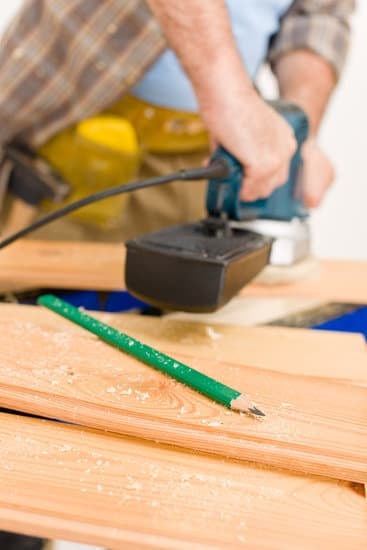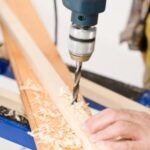When it comes to home improvement projects, the common misconception is that they should only be done in the spring. However, waiting until spring might not be the most advantageous approach. In fact, there are several reasons why tackling home improvement projects before spring arrives can be highly beneficial. By taking action during the off-season, you can save money, enjoy faster project completion, and make your home more comfortable and energy-efficient.
Many homeowners believe that spring is the best time to undertake home improvement projects as the weather improves and renovation fever sets in. However, this mindset overlooks a variety of advantages that come with starting your projects earlier. Off-season improvements can often be more cost-effective due to lower demand for materials and services. Contractors and suppliers tend to have more availability during non-peak times, allowing for better scheduling and potentially reduced costs.
Another advantage of getting a head start on your home improvements is faster project completion. With fewer people vying for contractors’ attention, your renovation timeline may be significantly shorter compared to waiting until everyone else begins their projects in the spring rush. This means you can enjoy a finished product sooner and have more time during the warmer months to fully appreciate your newly improved home.
So don’t fall into the trap of thinking that spring is the only suitable time for enhancing your living space. By breaking away from this notion and starting your home improvement journey early, you can benefit from cost savings, quicker project completion, and an earlier enjoyment of your upgraded surroundings.
In the following sections, we will explore specific project ideas ideal for off-season improvements and provide tips on how to maximize comfort, energy efficiency, resale potential, and overall satisfaction throughout your home all year round.
The Advantages of Off-Season Home Improvement
When it comes to home improvement projects, many people believe that the spring season is the optimal time to get started. However, waiting until spring may not always be the best approach. In fact, there are several advantages to tackling home improvement projects during the off-season, which can include the winter months.
One major advantage of off-season home improvements is cost-effectiveness. During non-peak seasons, contractors often offer discounted rates or special promotions to attract customers. This can result in significant savings for homeowners looking to complete their projects without breaking the bank. Additionally, suppliers and manufacturers may also offer discounts or clearance sales during this time, making it easier to find affordable materials and products for your renovations.
Furthermore, off-season home improvements often come with the benefit of availability. In peak seasons like spring and summer, contractors and suppliers tend to have more bookings and a busier schedule. This can lead to delays in getting your project started or completed. On the other hand, during non-peak times, contractors are likely to have more availability and flexibility in scheduling your project. This means you can potentially have your project completed faster and with fewer interruptions.
| Advantages | Description |
|---|---|
| Cost-effectiveness | Contractors may offer discounted rates during non-peak seasons. |
| Availability | Contractors are more likely to have flexible schedules for off-season projects. |
| Faster Completion | With less demand, off-season projects can be completed more quickly. |
Top Home Improvement Projects to Tackle in the Winter
Winter is a great time to tackle home improvement projects, despite the common misconception that these projects should only be done in the spring. In fact, there are several advantages to taking on home improvement projects during the winter season. Not only can it be more cost-effective, but contractors and suppliers are often more available during non-peak times, leading to faster project completion.
When it comes to specific projects that are ideal for the winter season, there are plenty of options to choose from. Indoor renovations, such as updating your kitchen or bathroom, can be done without having to worry about weather conditions. Additionally, insulation upgrades and energy-efficient enhancements can boost comfort and save money in the long run. By tackling these projects during the winter months, homeowners can enjoy a more functional and energy-efficient space once spring arrives.
Transforming your interiors is also a great way to utilize indoor spaces during the colder months. Whether it’s improving your living room, bedroom, or home office, there are numerous tips and inspiration available to make these spaces cozy and functional. From adding warm lighting fixtures and textiles to maximizing storage solutions, there are endless possibilities for enhancing indoor spaces during the winter season.
Overall, waiting until spring is not necessary when it comes to improving your home. Winter offers unique opportunities for cost-effective projects and faster completion times. From interior renovations to exterior maintenance tasks and energy efficiency upgrades, there are plenty of ways to enhance your home year-round. So why wait? Start planning and executing your home improvement projects today.
Utilizing Indoor Spaces
During the colder months, it’s important to make the most of your indoor spaces and create a cozy and inviting atmosphere. By focusing on improving the interiors of your home, you can not only enhance its aesthetic appeal but also maximize functionality. Here are some tips and inspiration for transforming various areas in your home.
- Living Rooms: The living room is often the heart of any home, so making it comfortable and stylish is essential. Consider adding warm and plush textures through cozy blankets, rugs, and cushions. Create a focal point with a fireplace or by arranging furniture around a central piece such as a coffee table or entertainment center. You can also upgrade lighting fixtures to create ambient lighting that adds warmth to the space.
- Bedrooms: Your bedroom should be a sanctuary where you can relax and unwind after a long day. Start by investing in quality bedding and pillows for maximum comfort. Consider upgrading your mattress if it’s old or uncomfortable. Add soft lighting options such as bedside lamps or fairy lights to create an intimate and soothing ambiance. Declutter your space by organizing your closet and implementing storage solutions that maximize space.
- Home Offices: With more people working remotely, having a dedicated home office has become increasingly important. Optimize your workspace by choosing an ergonomic chair and desk that promote good posture and comfort during long working hours. Incorporate adequate storage options like shelves or filing cabinets to keep everything organized. Personalize the space with artwork or decor that inspires creativity and focus.
Remember, improving your indoor spaces doesn’t have to break the bank. Consider DIY projects or repurposing existing furniture for a cost-effective update.
By focusing on these interior transformations during the winter season, you can create a welcoming atmosphere for yourself, family, and guests alike while making the most of being indoors during the colder months.
Exterior Improvements for Colder Months
During the colder months, it is crucial to pay attention to the exterior of your home and ensure that it is well-maintained and protected from the elements. By addressing exterior improvements during the off-season, you can prevent further damage and save yourself from costly repairs down the line. In this section, we will discuss some key tasks and tips for maintaining and enhancing the exterior of your home during the colder months.
Winterizing Your Roof
One of the most important aspects of exterior maintenance during winter is taking care of your roof. Snow, ice, and freezing temperatures can put a strain on your roofing materials, causing leaks or even collapse in extreme cases. To avoid such issues, it is essential to inspect your roof for any damage or loose shingles before winter sets in.
This will allow you to address any repairs promptly and prevent further deterioration. Additionally, clearing away debris, such as leaves or branches, from gutters and downspouts ensures proper drainage and prevents ice dams from forming.
Gutter Cleaning
Gutters play a crucial role in directing water away from your home’s foundation, preventing water damage and flooding. During winter, gutters can get clogged with leaves, twigs, or other debris which hinders proper drainage. It is important to clean out your gutters before winter sets in to ensure they are clear of any blockages. This not only prevents damage from ice dams but also allows for a smooth flow of water through the gutters.
Landscaping Preparations
While many people associate landscaping tasks with spring or summer months when plants are in full bloom, there are still several outdoor projects that can be tackled during winter. Pruning trees and shrubs while they are dormant helps shape their growth and promotes healthier foliage come springtime.
Winter is also an excellent time to plan and prepare for landscaping enhancements, such as installing new garden beds or adding hardscaping features. By taking advantage of the off-season, you can save on costs associated with these projects and be ready to enjoy a beautifully landscaped yard once the warmer months arrive.
By addressing these exterior improvements during the colder months, you can ensure that your home is well-maintained and protected throughout the winter. Taking care of your roof, cleaning out gutters, and preparing your landscaping will not only prevent costly repairs but also enhance the overall appearance and functionality of your home’s exterior. Don’t wait until spring to tackle these tasks – start now and reap the benefits of a well-maintained home.
Energy Efficiency Upgrades for Year-Round Savings
When it comes to improving your home, energy efficiency upgrades should be at the top of your list. Not only do these projects help reduce your carbon footprint, but they also result in long-term savings on energy bills. Whether you’re looking to make small changes or invest in larger upgrades, here are some energy-efficient enhancements that can benefit your home year-round:
- Install Programmable Thermostats: One of the easiest ways to save energy is by installing programmable thermostats. These devices allow you to set specific temperatures for different times of the day, ensuring your heating and cooling systems aren’t working unnecessarily. Adjusting the temperature settings based on when you’re at home or asleep can lead to significant savings over time.
- Seal Air Leaks: Drafty windows and doors can be a major source of energy loss. Sealing air leaks with caulking or weatherstripping helps maintain a consistent indoor temperature and reduces the workload on your HVAC system. Additionally, sealing air leaks prevents cold drafts during winter months and keeps conditioned air from escaping during summer months.
- Upgrade to Energy-Efficient Appliances: If you’re considering replacing old appliances, opt for those with an ENERGY STAR rating. These appliances have met strict standards set by the U.S. Environmental Protection Agency and use less energy compared to their counterparts. Upgrading to energy-efficient models such as refrigerators, washing machines, and dishwashers can significantly decrease electricity usage while still providing high-quality performance.
By implementing these energy efficiency upgrades, you not only contribute towards a more sustainable future but also enjoy financial benefits in the form of reduced utility bills. Remember that even small steps like using LED light bulbs and insulating hot water pipes can make a big difference in your home’s energy consumption. Don’t wait until spring to start saving money and reducing your environmental impact-take action now.
Renovations for Home Value
When it comes to home improvement projects, one of the key factors homeowners consider is the potential return on investment. Renovating your home with an eye towards increasing its resale value can be a smart decision, regardless of whether you plan to sell in the near future or not. In this section, we will explore some of the renovations that can have a significant impact on your home’s resale potential.
- Kitchen Updates: The kitchen is often considered the heart of the home, and it’s also one of the first areas potential buyers look at when considering a property. Upgrading your kitchen can significantly increase your home’s value. Consider replacing outdated appliances with more energy-efficient models, upgrading countertops and cabinets, and adding modern fixtures for a fresh and appealing look.
- Bathroom Remodels: Bathrooms are another area where renovations can make a big impact on resale potential. Updating fixtures such as sinks, faucets, and showerheads can give your bathroom a more modern and luxurious feel. Additionally, upgrading flooring and adding features like a walk-in shower or soaking tub can further enhance its appeal.
- Curb Appeal Enhancements: First impressions matter when it comes to selling a home, so investing in exterior improvements can greatly improve your resale potential. Some projects to consider include repainting or refreshing the exterior paint job, replacing or repairing siding or roofing materials as needed, and landscaping enhancements such as planting new shrubs or flowers.
- Energy-Efficient Upgrades: With growing awareness of environmental issues and rising utility costs, many buyers are looking for energy-efficient homes. Installations such as solar panels or geothermal heating systems not only reduce energy consumption but also attract eco-conscious buyers who are willing to pay a premium for these features.
When considering these renovations, it’s important to plan and execute them effectively to ensure maximum return on investment. Set a realistic budget, research reputable contractors, and consider consulting with a real estate professional who can provide guidance on which renovations will have the greatest impact in your specific market.
By focusing on these renovations that improve resale potential, homeowners can not only enjoy their upgraded spaces but also increase their home’s value when it comes time to sell. Taking the initiative to invest in these projects now can pay off handsomely in the future.
Budgeting and Financing Options for Home Improvements
When it comes to home improvement projects, budgeting is a crucial aspect that should not be overlooked. Proper budgeting ensures that you have a clear understanding of the costs involved and helps you make informed decisions throughout the process. By creating a realistic budget, you can avoid overspending and ensure that your home improvement projects stay on track.
To begin, start by assessing your current financial situation and determining how much you are willing to spend on your home improvement project. Take into consideration any existing debts or expenses to get a clear picture of what you can afford. It’s important to be honest with yourself about what is financially feasible for you and your household.
Once you have established your budget, it’s time to start researching the costs associated with your desired home improvements. Reach out to contractors, suppliers, or visit hardware stores to gather quotes for materials, labor, and any other expenses. Obtaining multiple quotes will give you an idea of the average cost of your project and help you identify areas where you may be able to save money.
In addition to careful budgeting, homeowners also have various financing options available when it comes to funding their home improvement projects. One common option is obtaining a home improvement loan from a bank or financial institution. These loans are specifically designed for renovations and typically offer lower interest rates than other types of loans.
Another financing option is utilizing existing home equity through options like a home equity line of credit (HELOC) or a cash-out refinance. These options allow homeowners to borrow against the value they have already built in their homes. However, it’s essential to carefully consider the terms and potential long-term effects before utilizing these options.
Conclusion
In conclusion, it is clear that waiting until spring to improve your home is a common misconception. By taking advantage of the off-season, you can experience numerous benefits when it comes to home improvement projects. Off-season improvements are often more cost-effective, as contractors and suppliers are more readily available and there is less demand for their services. Additionally, tackling projects during the off-season can result in faster project completion due to decreased competition for resources.
There are several specific home improvement projects that are ideal for the winter season. Indoor renovations, insulation upgrades, and energy-efficient enhancements can all increase comfort and save money in the long run. It is also important to focus on enhancing indoor spaces during colder months, such as living rooms, bedrooms, and home offices. Creating cozy atmospheres and maximizing functionality can greatly enhance your enjoyment of these areas.
When considering home improvements in the off-season, don’t forget about exterior maintenance and winterizing tasks. Roof repairs, gutter cleaning, and landscaping preparations should not be overlooked before severe weather worsens existing issues. By addressing these projects early on, you can prevent further damage and potentially save yourself from costly repairs in the future.
Energy efficiency upgrades should also be a priority when improving your home. Installing programmable thermostats, sealing air leaks, and upgrading to energy-efficient appliances can lead to long-term savings on your energy bills while reducing your environmental footprint.
Lastly, focusing on renovations that have a significant impact on resale potential can be a wise investment. Kitchen or bathroom updates are particularly valuable in increasing the value of your property if you decide to sell in the future.

I’m thrilled to have you here as a part of the Remodeling Top community. This is where my journey as an architect and remodeling enthusiast intersects with your passion for transforming houses into dream homes.





